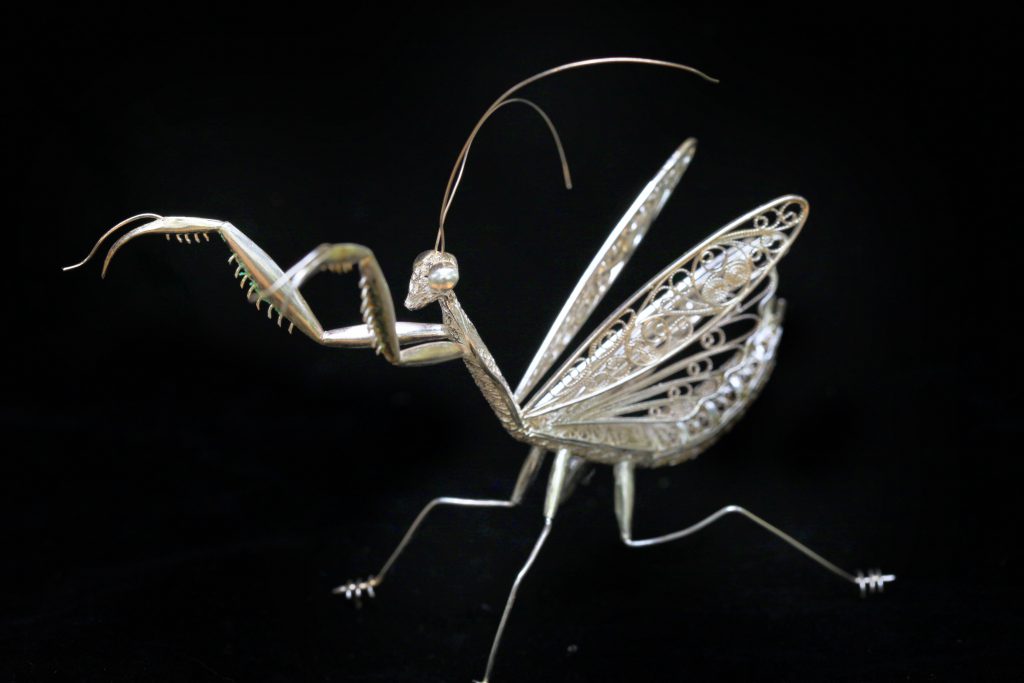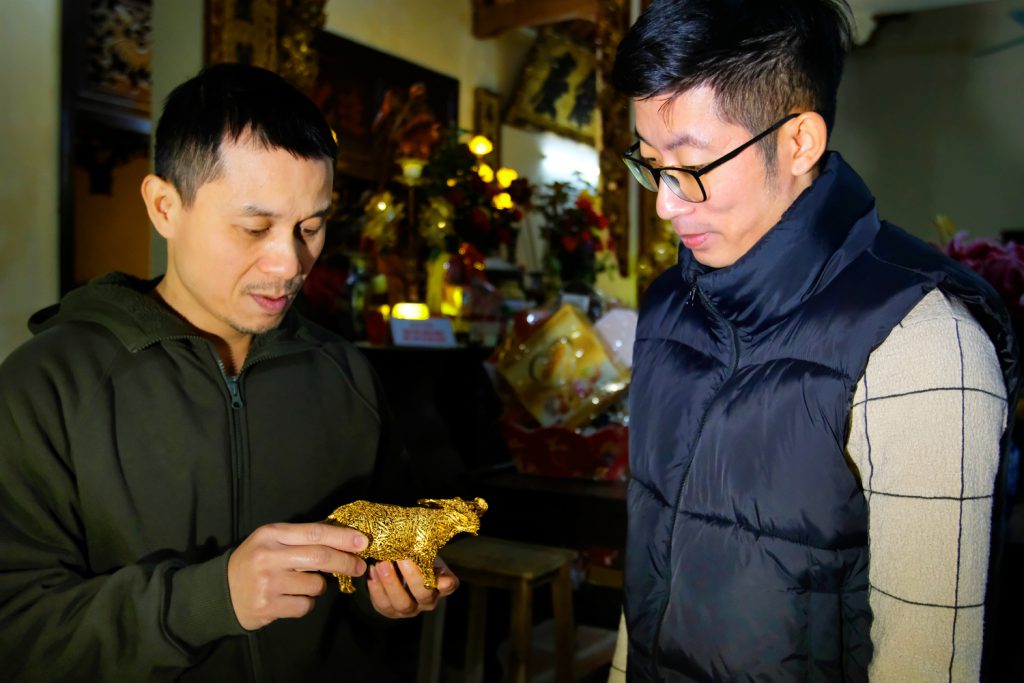Thai A
Dinh Cong village specializes in the art of creating silverwares from thin strands of silver.

When people think of jewelry-making in Northern Vietnam, the first place that comes to mind is Hang Bac Street in Hanoi’s 36 Old Streets. Also famous for goldsmithing and silversmithing are Dong Xam village in Thai Binh province and Dinh Cong village, formerly part of the Ha Dong district in Ha Tay province but now part of greater Hanoi.
Each place has its own specialty: artisans from Hang Bac excel in polishing, those from Dong Xam specialize in engraving, while those from Dinh Cong have mastered the dau bac technique, winding thin strips of silver to make shapes, patterns, and fine details. In Dinh Cong, three craft families – the Trần Điền, Trần Điện, and Trần Hòa – have practiced this artform since the 6th century, having travelled far to learn the techniques and pass them on to their descendants.

Due to changes over time, the old village of Dinh Cong is now a city, and its traditional craft has declined. Even so, some families have preserved the techniques of dau bac silversmithing and elevated this craft to an art form.
The craft of dau bac is a very challenging silversmithing technique. It is a general term for drawing silver into fine strands and twisting them together, thereby creating exquisite patterns. According to Mr. Quach Tuan Anh, head of the Craft of Dau Bac Cooperative in Dinh Cong village, transforming raw silver pieces into finished products requires five steps. First, the raw material is heated and poured into moulds to form small silver bars, which are then passed through a rolling machine to create thinner silver pieces. The next step is spinning silver into threads, a critical phase for product quality. Under skilled hands, these silver strands can be drawn to a diameter of 0.26mm, thinner than a strand of hair. Under the light, these fragile silver threads, like starlight in the sky, serve as materials from which artisans braid products following patterns sketched out in advance to create elegant decorative items. In the past, artisans mainly specialized in making jewellery, such as necklaces, bracelets, bangles, and rings. Over time, as market demands became more diverse, Dinh Cong’s artisans also explored creating items related to modern life, such as business card holders, belt buckles, wall paintings, etc. The colour is not limited to silver. Threads can be dyed or gold-plated to enrich the product’s colour spectrum.

This craft is unique in that it does not require a large workshop or industrial machinery and does not produce toxic waste that affects the environment. All that’s needed is a table on which to lay out design sketches, a few pairs of pliers, scissors, files, and tiny tools for cutting, filing, and polishing. When visiting a jewellery workshop, the only sounds include the gentle tapping of hammers, the murmur of artisans at work, music from a phone, and many birds chirping. This differs from the bustling and noisy atmosphere of other craft villages specializing in woodworking, bamboo weaving, or textiles.
As times have changed, with the support of information technology, the artisans of Dinh Cong are no longer confined by the strict traditional rules of their ancestors and have become proficient in researching new designs and exploring foreign jewellery styles. Their products are increasingly innovative. Under the roof of the communal house, the young members of the Craft of Dau Bac Cooperative in Dinh Cong village astonish visitors with their creations, including leisurely herons walking by rice stalks, peacocks with splendidly fanned tails, and valiant mantises raising their claws. All of these items are crafted in a 3D style, rather than being confined to the flat 2D images of the past. Naturally, these complex shapes demand higher levels of skill, more time, and the fluid coordination between different production stages.
The people of Dinh Cong village have long realized the necessity of passing their craft onto the younger generation. Hence, a project offering free vocational training was initiated with material support from the Hoang Mai District People’s Committee. In around one year, the Cooperative has provided basic training to more than 100 students from various localities, all united by their passion for this ancient craft. Beneath the village’s ancient tiled roofs, these young people will carry this old craft across new horizons, bringing to life exquisite silverworks that glow like clouds in the sun.










